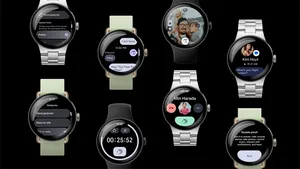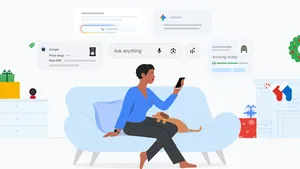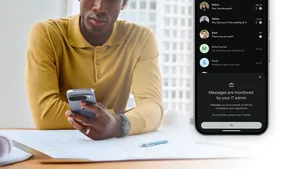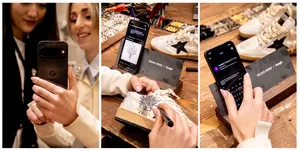Looking back on 10 generations of Pixel
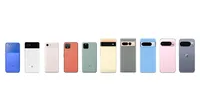
Yesterday at Made by Google, we unveiled the 10th generation of Pixel. The Pixel 10 series — as well as the new Pixel Watch 4 and Pixel Buds 2a — are the latest devices to join the Pixel family. And things have progressed quickly since we introduced our first Pixels nearly a decade ago.
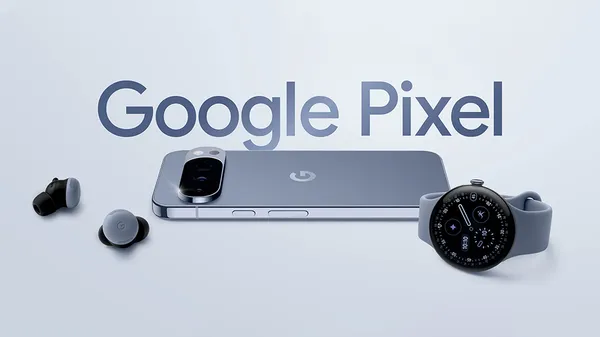
On October 4, 2016, we debuted Pixel and Pixel XL. The phones came in an elegant two-tone design and were available in Quite Black, Very Silver and Really Blue — with that subtle “G” on the back.
The original Pixel launch event in San Francisco
This first generation of Pixel established much of what defines it today: the revolutionary AI-powered camera, helpful (and exclusive) software features and a deeply personalized Google experience.
“From day one, Pixel's mission has been to bring the best of Google to users,” says Peter Prunuske, senior director of product management for Pixel.
Since that first launch in 2016, we've released dozens of models, including regular Pixel phones, larger XL models, entry-level A-series devices and cutting-edge foldables. “It’s been a nearly decade-long journey with one central goal: bringing together the best of Google's software, hardware and AI to create the best possible experience for users,” says Shakil Barkat, VP of Devices and Services at Google.
“Pixel has been the place where we debuted lots of our most popular features over the years, like Night Sight, Car Crash Detection, Photo Unblur, Magic Eraser and more,” says Shenaz Zack, senior director of product management for Pixel software. She says some of the team’s earliest projects focused on supporting backup and restore functions across Google apps, so it would be painless for people switching to Pixel. There was also the Top Shot feature in the Pixel camera and Google Photos app. “Our goal was to make sure every part of the phone offered the best of Google, in your pocket,” Shenaz says. “And we want to keep doing that with each new model and each new Pixel Drop.”
A bar, a chip and a big step up
A key focus for Pixel since the beginning has been the close tie between our hardware, software and services. Every time one part of the Pixel improves — when camera hardware is upgraded, for example — it opens up new avenues for software features, like the popular Astrophotography mode. Over the years, the hardware, software and services teams get better and better at building the pieces that make up Pixel, and doing it together.
While early generations of the Pixel introduced new features we've come to love (like IP67 water resistance with the Pixel 2 and the second telephoto camera lens with the Pixel 4) the Pixel 6 generation of devices was a turning point. It marked the debut of several major additions to the Pixel line: the now-iconic Camera Bar, which gave our devices a cohesive visual identity centered on our best-in-class-winning camera; and our first “Pro” phone, reflecting the more premium devices our hardware team was able to produce.
Early sketches of the Pixel 6 design as the team explored multiple iterations
Perhaps most importantly, Pixel’s AI-first vision took a huge leap forward with Google Tensor, a bespoke Google processor that allowed us to deliver powerful AI capabilities directly on device. At this point, we had an in-house silicon team working closely with Google AI Research to prepare the models and chip architecture years in advance.
“Tensor enabled features like real-time voice translation with Live Translate to really come into their own,” Shenaz says. “Thanks to the hard work of teams across Google, we were able to offer live translation of both text and speech in real-time running locally on device — something very few could do.”
From a Pixel to a portfolio
As we introduced newer, better Tensor chips, Pixel's capabilities grew. With Pixel 7 came Clear Calling and Photo Unblur; with Pixel 8 came Best Take and Magic Editor for even better photos.
Then, last year's Pixel 9 range marked a huge leap forward in our design language. Across all five phones — Pixel 9, Pixel 9 Pro, Pixel 9 Pro XL, Pixel 9 Pro Fold and Pixel 9a — we introduced a new look defined by more premium materials, refined finishes and a redesigned Camera Bar. But launching more devices and upgrades had its challenges.
“Smartphones in general are some of the most complex consumer electronic devices you can make,” says Dave Sander, VP of Operations. “You have to have teams of engineers and program managers monitoring production on a daily basis. You’ve got to make sure your parts are where they need to be. It’s an extraordinarily complex operation.” And given that Pixel 9 was being developed and released during the pandemic, the Global Operations team had to radically rethink how they built and shipped hardware products due to travel restrictions. But they got creative, finding ways to monitor processes and collaborate remotely.
The Pixel 9 series introduced our first phones with Gemini built-in, putting Gemini in your pocket to help answer questions about virtually anything, anywhere, and recalling what our CEO Sundar Pichai said back in 2016 when we previewed those very first Pixels: "No matter where you are, or what you’re doing, you can have the best of Google by your side."




